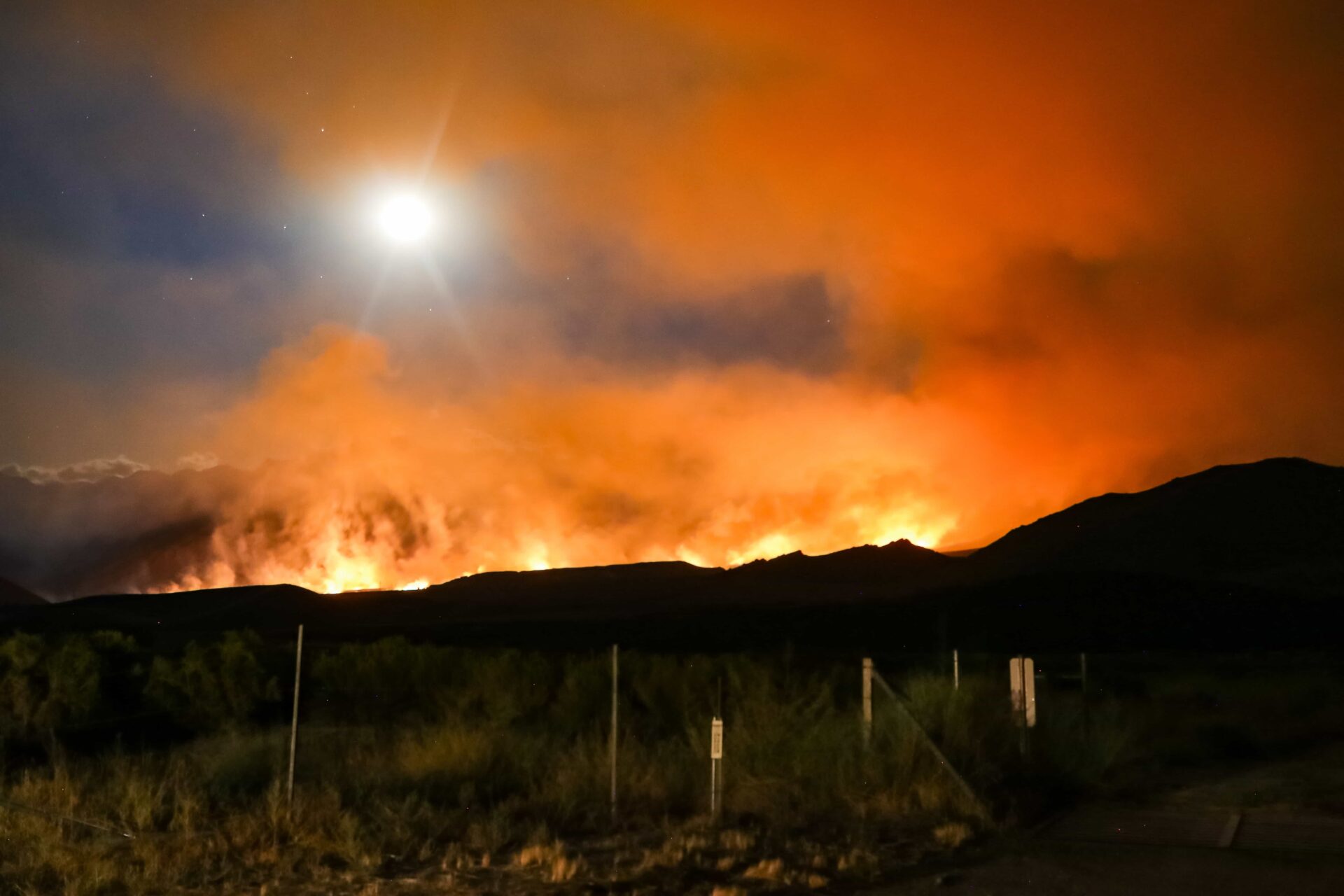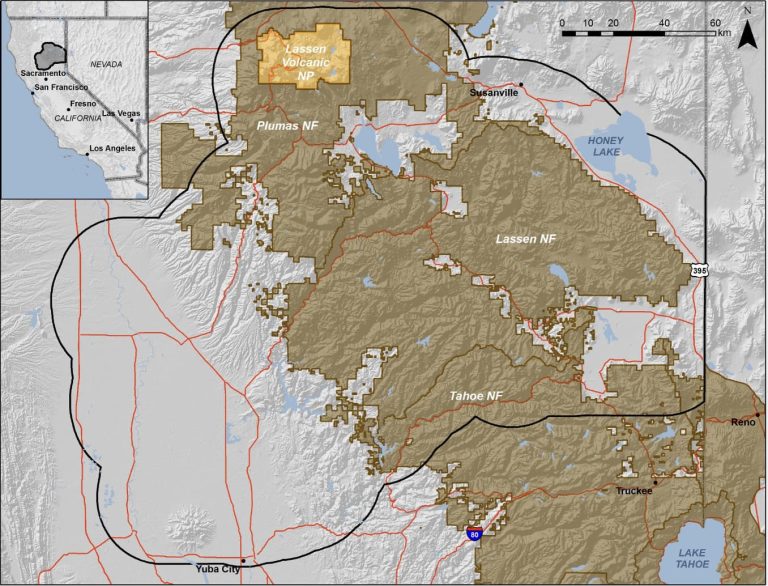Understanding where and how fire patterns may change is critical for management and policy decision-making. To map future fire patterns, statistical correlative models are typically developed, which associate observed fire locations with recent climate maps, and are then applied to maps of future climate projections. A potential source of uncertainty is the common omission of static or dynamic vegetation as predictor variables. We therefore assessed the sensitivity of future fire projections to different combinations of vegetation maps used as explanatory variables in a statistically based fire modeling framework. We compared models without vegetation to models that incorporated static vegetation maps and that included output from a dynamic vegetation model that imposed three scenarios of fire and one scenario of land use change. We mapped projected future probability of all and large fires (> = 40 ha) under two climate scenarios in a heterogeneous study area spanning a large elevational gradient in the Sierra Nevada, California, USA. Results showed high model sensitivity to the treatment of vegetation as a predictor variable, particularly for models of large fire probability and for models accounting for wildfire effects on vegetation, which lowered future fire probability. Some scenarios resulted in opposite directional trends in the extent and probability of future fire, which could have serious implications for policy and management resource allocation. Model sensitivity resulted from high relative importance of vegetation variables in the baseline models and from large predicted changes in vegetation, particularly when simulating wildfire. Although statistical fire models often omit vegetation due to uncertainty, model sensitivity demonstrated here suggests a need to account for that uncertainty. Coupling statistical and processed based models may be a promising approach to reflect a more plausible range of scenarios.
Mapping future fire probability under climate change: Does vegetation matter?





